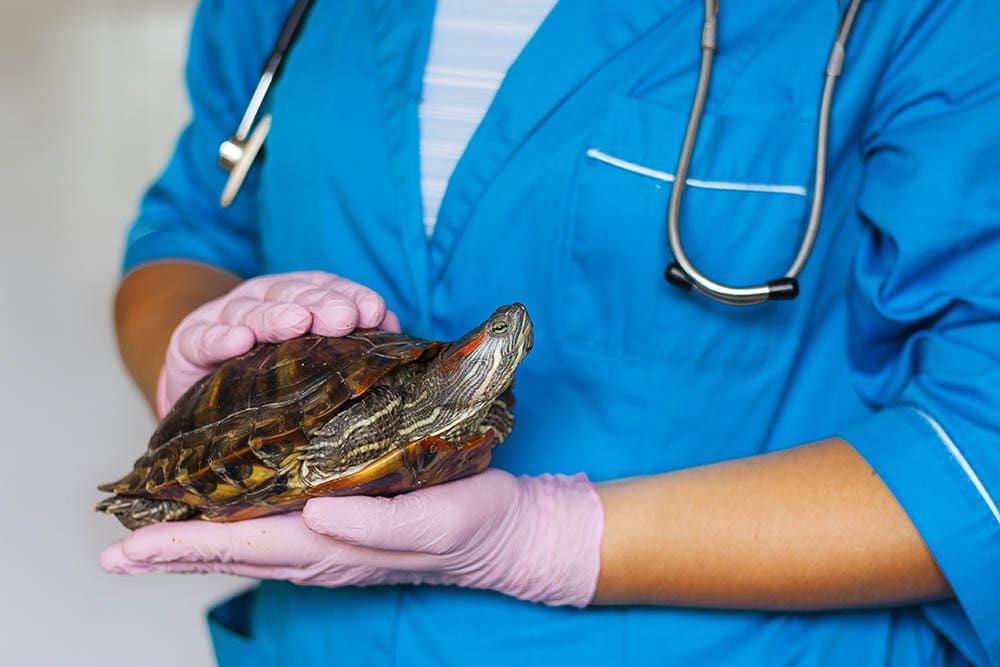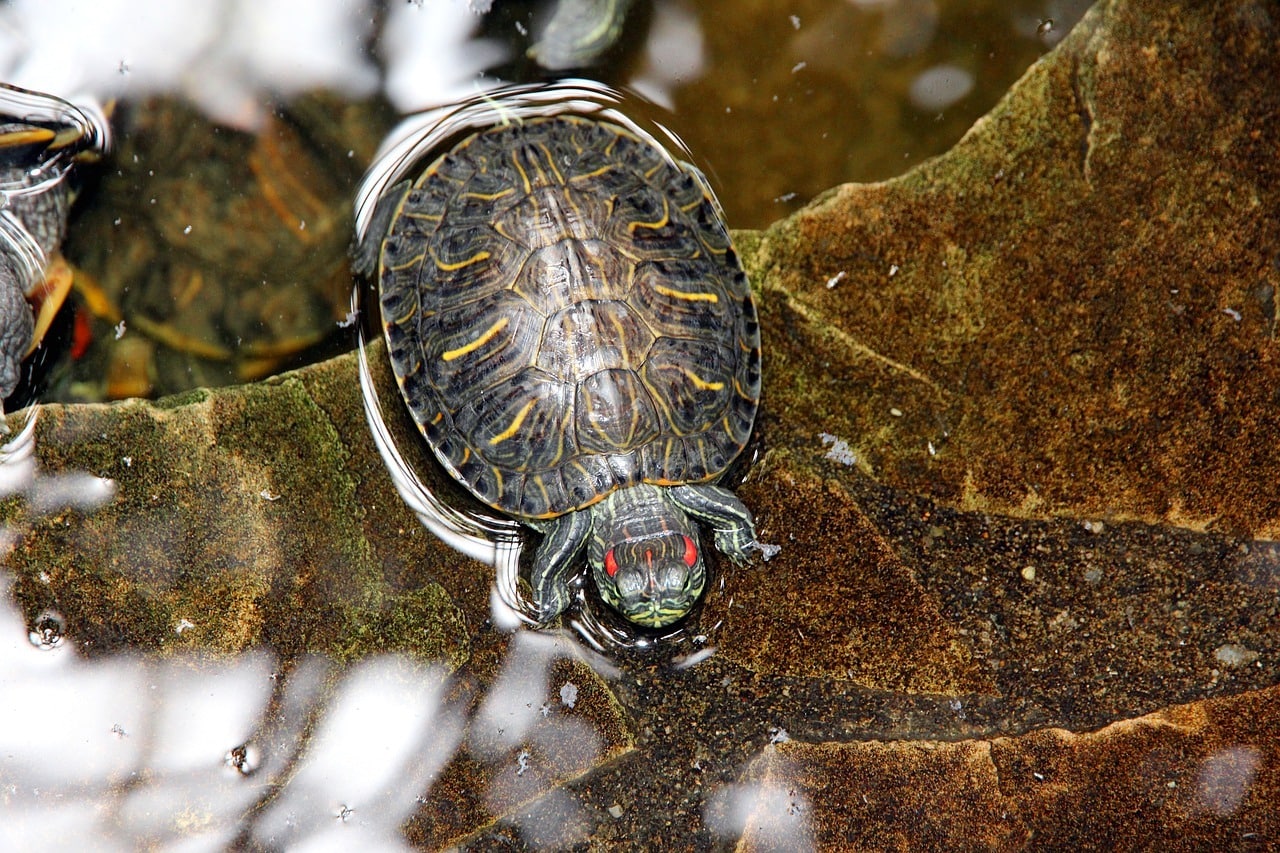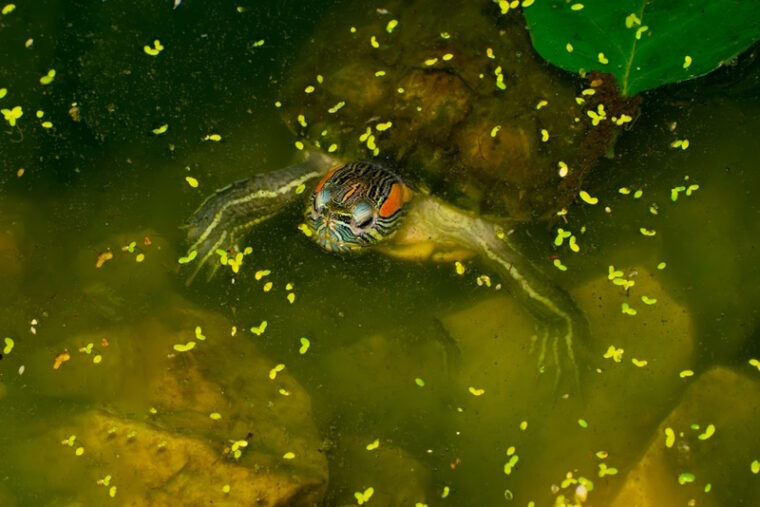
Most aquatic hobbyists will agree that few animals in the world match a turtle’s tenacity as they paddle their little flippers and webbed feet around the tank. These animals are simply adorable to watch, so it’s more than disappointing when the tank’s water quality degrades.
Aside from being unsightly and making it more difficult to see, you may worry that cloudy water is bad for your shelled buddy’s health. In this article, we’ll cover nine of the most common causes of cloudy water in turtle tanks and include tips on how to fix it!
The 9 Reasons Why Your Turtle Tank Water Is Cloudy
1. A Filtration Issue
One of the most common causes of discolored tank water is poor filtration. This could be because you’re using the wrong size of filter for your tank, or you’re using a filter that’s unsuited to a turtle tank. Another cause could be either a lack of cleaning or even too much cleaning!
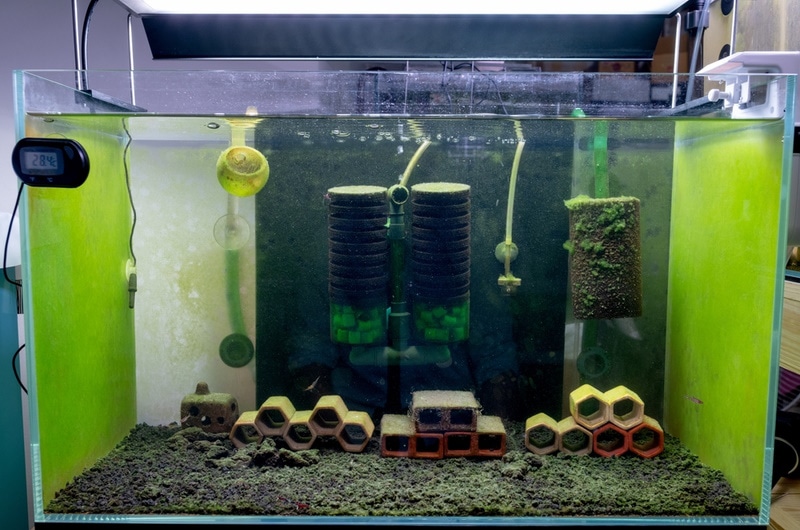
Make sure you’re using the right type of filter. Hang-on-the-back and internal filters are not efficient enough for turtle tanks. We recommend using a canister filter with a flow rate that is six to eight times your tank’s water capacity per hour.
If you are using the right type of filter, it should only need to be cleaned once per month. Cleaning your filter more often than this will destroy helpful ammonia-consuming bacteria that are essential for keeping your tank clean!
While overcleaning your tank’s filter could result in murky water, the opposite—not cleaning it enough—will result in murky water. Once a month or bi-monthly should do the trick.
2. Rinse Your Substrate
If you’ve added new substrates, such as pebbles or aquarium gravel, to your tank, it is possible that you’ve introduced dirt, dust, and debris into the water. Most substrates are dusty out of the package.
Luckily, this one’s easy to fix. If you’ve brought home a new substrate, give it a good rinse before adding it to your turtle’s tank.
3. Algae Overgrowth
Algae are often the cause of cloudy aquatic tanks. If you give algae the chance to feed on your turtle’s waste or scraps of leftover food, it’ll soon bloom out of control and give the tank water a milky appearance.
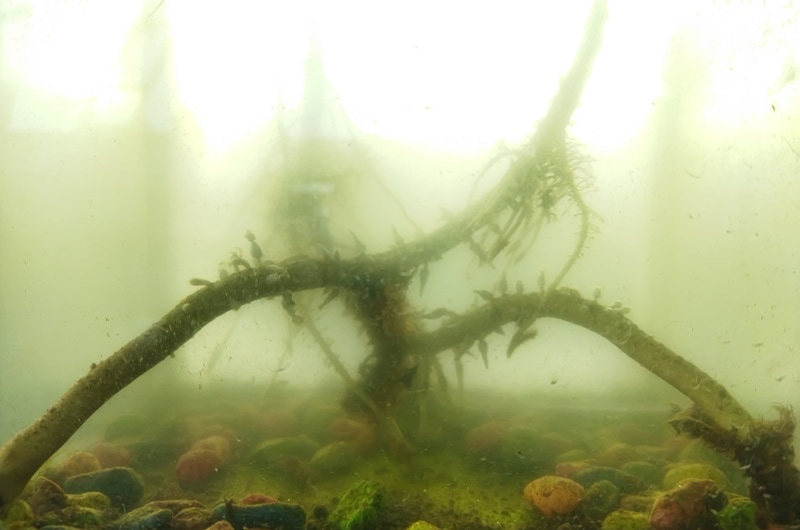
You’ll need to clean your tank regularly and remember that turtles are messy eaters. If possible, try to feed your turtle outside the tank. If not, you should only feed your turtle what they can eat. This will lower the risk of them leaving scraps of leftover food.
If you haven’t already set one up, a UV lamp is highly effective at minimizing algae.
4. Bacterial Blooms / New Tank Syndrome
Milky white cloudiness in your tank water could point to a bacterial bloom. This is especially likely if you’ve just set up your tank or just changed more than 25% of your tank’s water. Fortunately, this is just a part of the process of your tank’s microbiome distribution. For a short period, a bacterial imbalance will cause discoloration and possibly a smelly disorder.
Don’t do anything! What’s really happening is that the ammonia levels in your tank were too high. As the beneficial ammonia-consuming bacteria in your tank kick into life, they’ll bloom, causing your tank water to appear cloudy.
Your tank’s bacterial levels should balance out within a few days, and the water will begin to clear.
5. Unbalanced pH Levels
Your tank water’s pH level should remain between 7.0 and 8.0. A pH level below 6.0 would inhibit the growth of ammonia-consuming bacteria and lead to a build-up of ammonia and nitrate in your turtle’s tank.
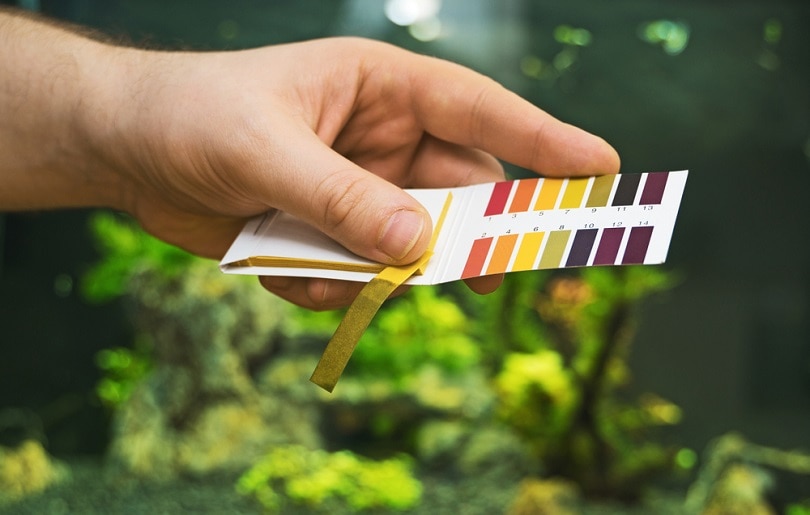
Use a pH testing kit to regularly check your tank’s water quality. You may be able to drive carbon dioxide (a cause of acidic water) out of the water by oxygenating it. Another way to increase the pH level is to mix crushed coral into your tank’s substrate or to add a small amount of baking soda into the water.
If your tank water’s pH level is on the upper end, adding driftwood may help lower your water’s pH level by releasing tannins.
6. Too Much Light
It may seem strange to the uninitiated, but keeping your tank in a brightly lit area, especially if it’s in a sunny spot, will encourage the growth of algae. Algae blooms will cause your turtle’s tank water to appear milky.
If you’re keeping your tank in a brightly lit spot, try moving it to a slightly dimmer spot. Your turtle still needs sufficient lighting, so make sure their new setup is not devoid of light.
7. Tank Water Needs Changing
If you don’t change your tank’s water often enough, it can lead to a build-up of toxins, a chemical imbalance, floating debris, and generally bad water quality. Your tank’s water needs changing once a week, or more if necessary.
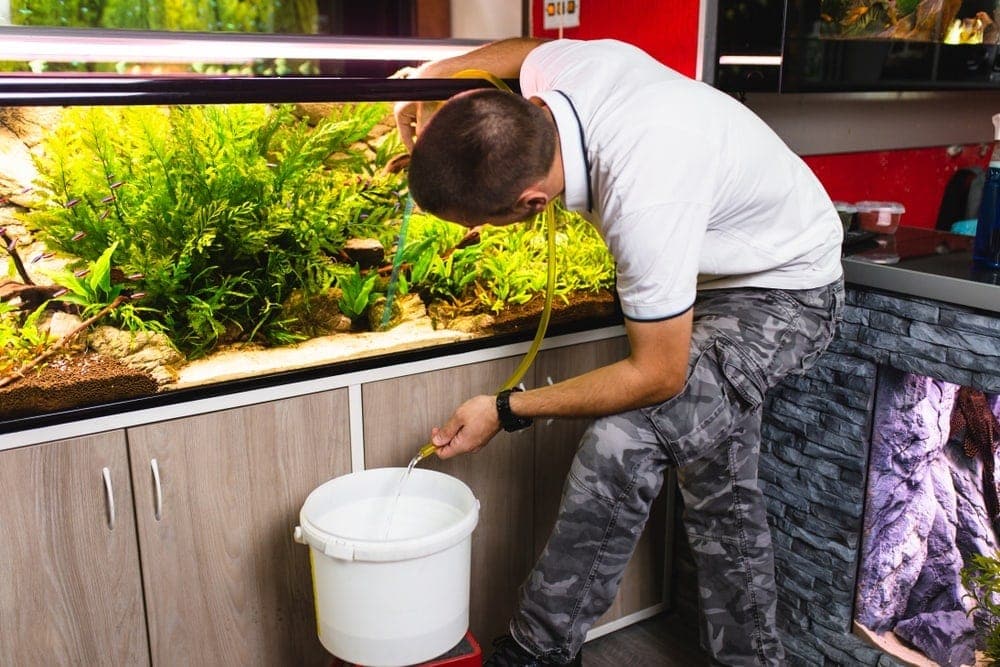
When changing your turtle’s water, remember not to replace more than 25% of your tank’s total capacity. Aside from preventing your pet from feeling shocked at the sudden change, you’ll be less likely to trigger a bacterial imbalance and therefore prevent a bacterial bloom.
8. Overfeeding
If you overfeed your turtles in the tank, they’ll leave scraps of uneaten food around the tank and in the substrate. As this food disintegrates, it will float around the water and cloud up the tank, leaving it not only unsightly but also unhealthy, as it encourages algae blooms.
The best solution is prevention in this case! If you let your turtle dine out (of their tank), they’ll be less likely to leave food scraps in the water. On the other hand, if you’re feeding them in the tank, only feed your turtle the correct amount of food. This will minimize the risk of them leaving leftovers.
Within 10 minutes of feeding your turtle, remove any uneaten food. A net, gravel vacuum, or siphon could help with this task!
9. Something in the Tank
If you’ve ruled out every item on this list, then a foreign material may have been introduced into your tank. New tank decorations, driftwood, and substrate can all cause water discoloration.
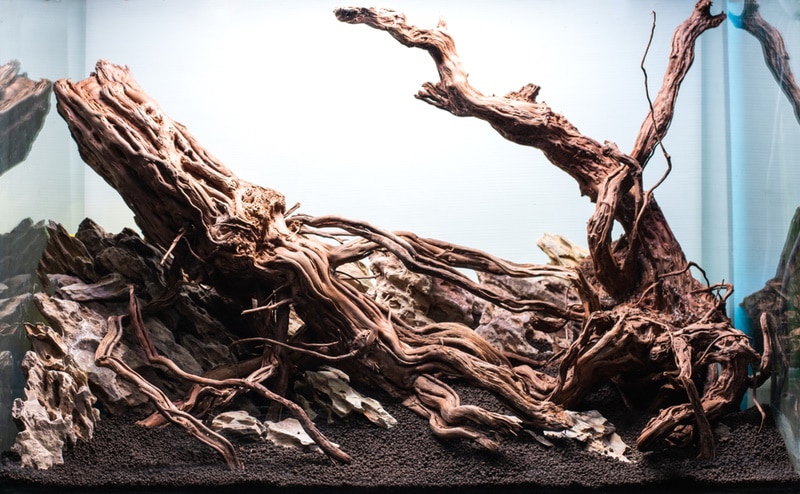
New decorations should be rinsed and soaked prior to introduction to your tank. This is especially true for driftwood, as the tannins seep into the water and not only cause discoloration but also reduce the water’s pH levels.
Conclusion
There are several common causes of cloudy water in turtle tanks. If you’ve just set up your tank for the first time or changed a large amount of the water, cloudiness could be a sign of (beneficial) bacterial bloom and will likely go away on its own within a few days.
We hope that by following the tips in this article, you can eliminate the cause of cloudy water in your turtle’s tank so you can go back to watching your shelled babies paddle around blissfully!
Featured Image Credit: Anton Vakhrushev, Shutterstock



